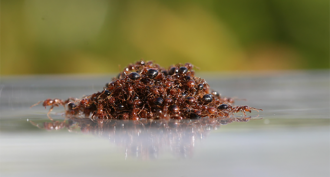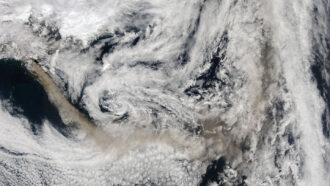
Stephen Ornes has been writing for Science News Explores since 2008, and his 2014 story "Where Will Lightning Strike?" won an AAAS/Kavli Gold Award. He lives in Nashville, Tenn., and he has three children, who are inventing their own language. His family has a cat, six chickens, and two rabbits, but he secretly thinks hagfish are the most fascinating animals. Stephen has written two books. One is a biography of mathematician Sophie Germain, who was born during the French Revolution. The other, which was published in 2019, features art inspired by math. Visit him online at stephenornes.com.

All Stories by Stephen Ornes
-

-

-
 Oceans
OceansLife beneath the ‘berg
Scientists find Antarctic icebergs play a new and bigger role in the climate cycle.
-
 Tech
TechLasers of a feather
A nifty light trick in bird feathers inspires researchers to create a new kind of laser.
-
 Space
SpaceEnd of an era
As NASA’s space shuttles land for the last time, they leave behind a sound scientific legacy.
-
 Health & Medicine
Health & MedicineSunlight worsens jet pollution
Chemical reactions caused by the sun’s rays worsen air pollution from idling jets at airports.
-
 Animals
AnimalsWhen the giant ants went marching
A new study of an ancient fossil suggests that 50 million years ago, supersized ants went on a cross-continental trek.
-

-
 Animals
AnimalsOpen eyes, dozing minds
Scientists find that rats that stay up late are neither fully asleep nor fully awake.
-

-

-
 Fossils
FossilsDangerous dinos in the dark
Eye fossils reveal predatory dinosaurs’ preference for hunting at night.